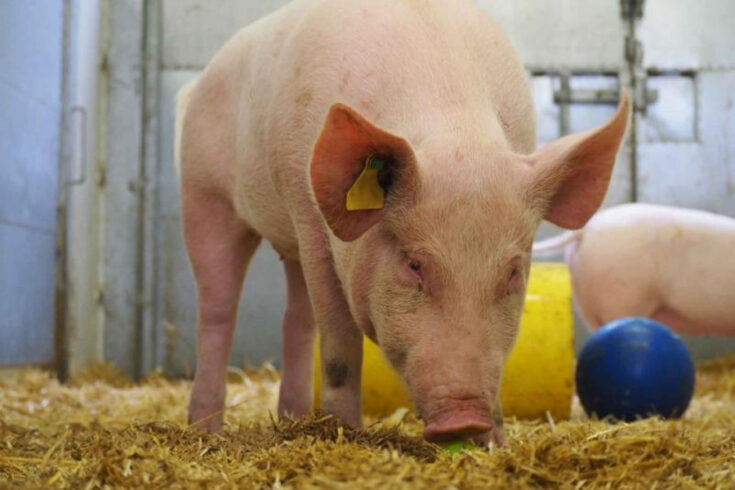Research has demonstrated that combining two different routes of administering the flu vaccine provides pigs with better protection against disease than using only one method.
The research, published in the Journal of Immunology, was undertaken by scientists at The Pirbright Institute, which is funded by the Biotechnology and Biological Sciences Research Council (BBSRC).
Vaccination strategies
The findings could inform vaccination strategies for human flu and other respiratory diseases.
In the studies, researchers demonstrated that pigs receiving S-FLU vaccine simultaneously by injection to the muscles (intramuscular) and by aerosol inhalation were better protected against the H1N1 pandemic swine flu strain. This compares to pigs given the vaccine by either route alone.
Professor Alain Townsend from the University of Oxford developed S-FLU, which is a weakened version of the flu virus. S-FLU can enter pig or human cells but is unable to spread because it cannot make a vital protein of the virus called haemagglutinin.
The signal sequence of the haemagglutinin has been removed, hence the name S-FLU (for signal minus flu).
Strong antibody response
S-FLU triggers a strong antibody response when delivered intramuscularly, which reduces the animals’ virus levels.
In contrast, aerosol administration of S-FLU activates T cells in the lungs, which do not prevent shedding on their own, but could help to protect against infection with different strains of influenza.
By combining these two methods, called simultaneous systemic and respiratory immunisation (SIM), pigs benefitted from both high antibody levels in the blood and strong lung T cell responses. This reduced virus shedding and signs of infection in the lungs.
These promising results show that SIM could be developed as a strategy for human influenza vaccines.
Variety of tools
Researchers were able to assess the immune response triggered by the different vaccination methods in great detail using a wide variety of tools.
Babraham inbred pigs were chosen for this as they help scientists to be more certain that changes in immune response they see are due to the vaccine, not genetic variations between each pig. Their findings indicate that the route of administration has a crucial effect on immune responses generated by a vaccine.
Dr Elma Tchilian, head of the Mucosal Immunology Group at Pirbright, said:
Pigs have similar physiology to humans and are infected by the same influenza strains, making them an excellent model to study novel vaccine strategies for respiratory viruses, including COVID-19, which might be used in humans.
New insights for human vaccine studies
Veronica Martini, lead author of the study at Pirbright, added:
The fine grain data we obtained has led to the exciting discovery that the pig immune response triggered by S-FLU is very different between the blood and lungs. This finding has implications for human vaccine trials where only blood samples are taken to assess the immune response. Understanding these differences in pigs provides new insights for human vaccine studies.
Further information
This work was funded by BBSRC, part of UK Research and Innovation.
Top image: Credit: The Pirbright Institute

